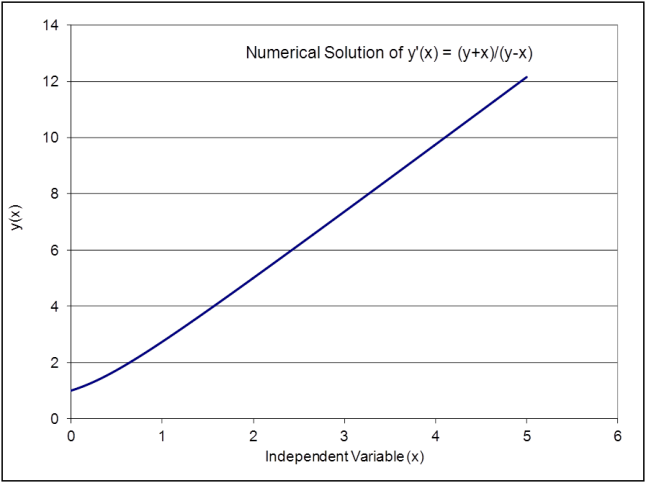Perhaps the simplest of numerical integration techniques is the Euler’s method. The premise of the Euler method is based on the definition of the slope of a curve at a given point from basic calculus.
Rearranging the above eqn., one can obtain
The newly rearranged equation above represents a method for marching from stage ‘x’ to ‘x+h’, given a value for y’(x) at x=0. In other words, given f(0), one can march along from y(0) with incrementing values of h to obtain a numerical solution for the 1st order ODE. Thus,
Step 0: f(0) = initial value
Step 1: f(step=1) = f(step=0) + hf’(step=0)
Step 2: f(step=2) = f(step=1) + hf’(step=1)
...
The recursive statements are usually represented in the following format:
The algorithm for Euler's method of numerical integration can be summarized as follows:
1) % Define step size (h), initial function y(0), initial time t0, final time tf
2) nosteps = (tf – t0)/h
3) for i ← 1 to nosteps
- Calculate derivative function f[t0,y[i]]
- y[i] ← y[i-1] + h*f[x,y]
- t0 ← t0 + h
4) % Display results
To illustrate the procedure, the Euler’s method was applied to the following initial value problem (Butcher, Numerical methods for ordinary differential equations, 201(a)) with a step size of 0.001.

The result of the integrated function is plotted in fig. (1).

[…] Forward Euler’s method presents an elegant technique to march from time tn to tn+1 using the knowledge of the […]
ReplyDelete[…] Euler’s methods (both forward and backward) are single step methods, as is evident from the formulation. An improved solution for […]
ReplyDelete